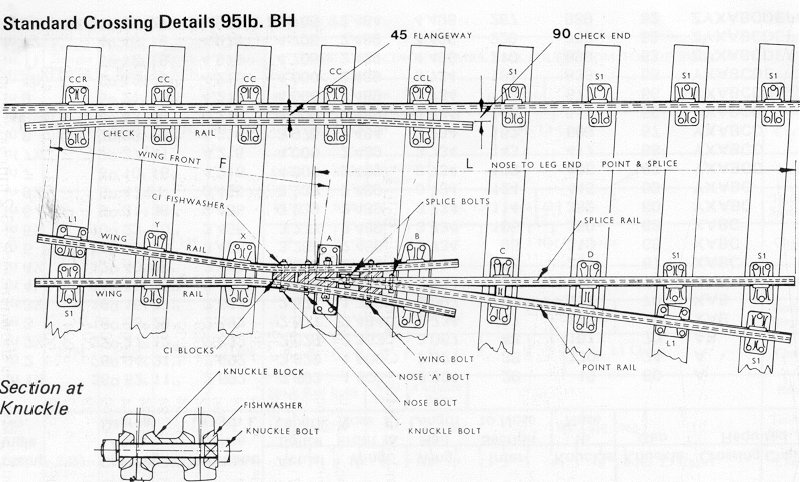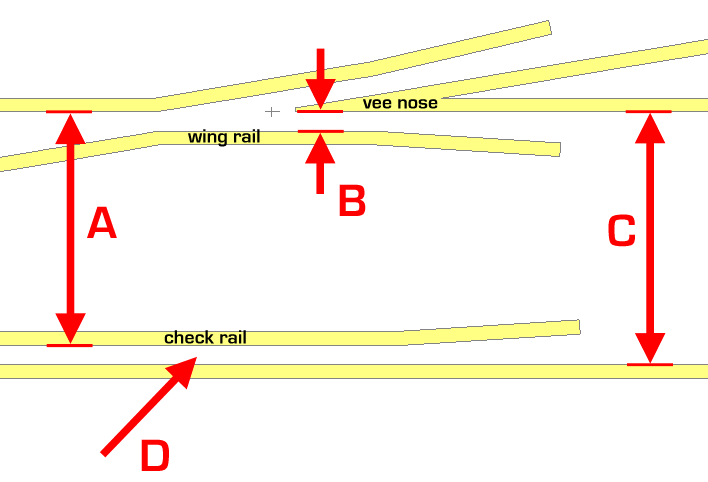Martin Wynne wrote:Colin Parks wrote:But I am confused: when fitting the check chairs, is the left hand side judged to be when looking from the inside or outside of the track?
Hi Colin,
Stand on the end of the timber and look down on the check rail. CCL is on the left, CCR is on the right:
There is more in this drawing than first meets the eye. You can see that where the rail is inclined, the outer edge of the rail foot is shown. Where the rail is vertical, the foot can't be seen. You can see between the B and C chairs that there is a twist in the rail so that the point and splice rails are vertical at the vee nose and inclined for the remainder of their length. Note also the use of L1 bridge chairs where there isn't room for two ordinary S1 chairs.
regards,
Martin.
I must be getting close to having it all correct now Martin. All the handed chairs are definitely in the right place now and sighting down each run of five check chairs, the bases are in the same plane, with the 'CC' feeds from where they were joined to the sprue, all on the same side.
What is most interesting about that diagram you posted is the twist in the point and splice rails. This is the answer to the question I had when first shaping the rails for the double slip's common crossings: How can two rails, inclined at 20 degrees, be shaped at their tips to form the vee without a gap in the joint? Well the fact is that they are vertical at the tip as you say. I fear my common crossings have angled wing rails but vertical point and splice rails!
The L1 and S1 chairs are easy enough, as I have the C&L downloads for (everything but the check rail) chairing.
All the best,
Colin

